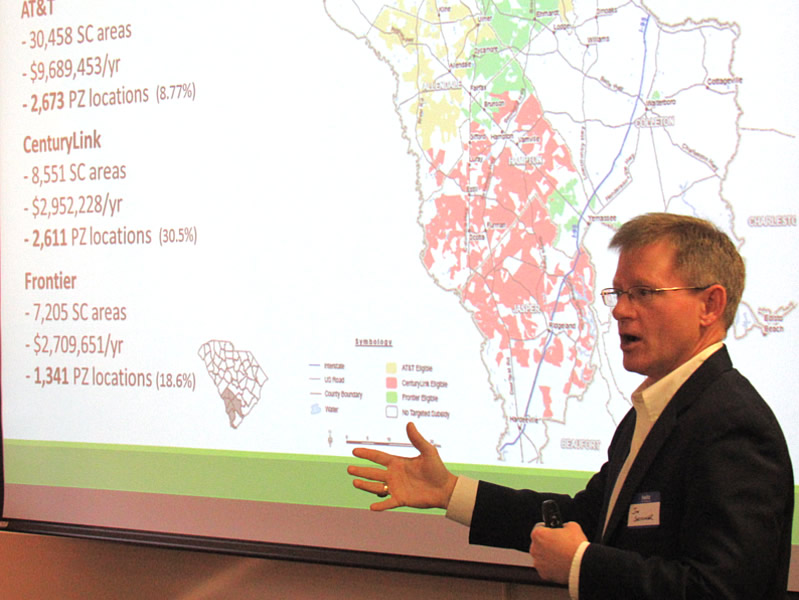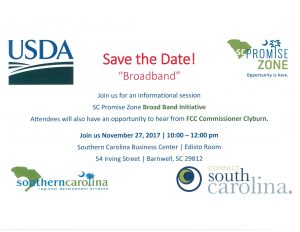
Connect SC’s Jim Stritzinger discussed broadband access during a 2016 meeting in the Promise Zone.
A recent story in The (Charleston) Post and Courier highlighted efforts in the S.C. Promise Zone to improve Internet access throughout the rural region of the state.
An excerpt:
So in 2015, when the federal government designated six counties along the Savannah River a high-poverty “promise zone” that gets special status in grant programs, internet access came up often at community meetings as a problem residents wanted to tackle.
Better broadband was up there with cleaning up crime, improving education and getting easier access to health care, said Dean Van Pelt, promise zone coordinator. So the group is setting out to improve internet access.
Step one: Figure out who doesn’t have internet service and why they haven’t signed up. Jim Stritzinger, director of Connect South Carolina, says there’s not a simple answer to those questions.
In many cases, it’s an issue of physical infrastructure, a lack of cables laid across a thinly populated region. But the price of service is an issue, too, especially in an area with relatively high unemployment and poverty. The cost of buying a computer and the sluggishness of service are also factors.
That’s an issue across South Carolina, says Stritzinger, who calls internet access “our generation’s fresh water.”
“You don’t have to go very far off of I-26 to have very, very different telecommunications capabilities. And this is true pretty much across the state,” Stritzinger said. “You go really 10 miles off the interstate on either side, and you can be in places where it’s hard to receive cellphone service. You can be in certain neighborhoods where the internet is not available to you.”
Read more →




